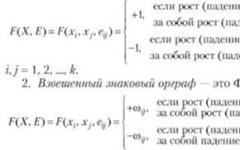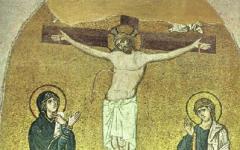Это прекрасное животное - волк - упоминается во многих английских идиоматических выражениях. Упоминается как в отрицательном смысле, так и с оттенком некоторого восхищения.
Итак, “the big bad wolf
” означает не что иное, как «страшный серый волк», то есть опасная, страшная личность.
Пример употребления:
- You’re the big bad wolf so far as this house is concerned. (E. S. Gardner, ‘The Case of the Haunted Husband’) - Для этого дома вы страшный серый волк из детской песенки.
Это выражение - часть фразы из песенки в мультфильме Уолта Диснея «Три поросёнка» (1933 г.) "Who’s afraid of the big bad wolf?" - Нам не страшен серый волк, то есть мы ничего и никого не боимся.
Выражение "a lone wolf " - «волк-одиночка», «одинокий волк» - человек, идущий своим путем без поддержки других людей, предпочитающий трудности одинокого существования преимуществам общинного бытия, первоначально возникло в американском варианте английского языка.
Кстати, вопреки сложившимся представлениям, не все волки живут семьями. Встречаются и одиночки. У таких волков нет своего участка, семьи и коллектива. Изредка, чаще зимой, когда добывать еду становится особенно трудно, они объединяются в небольшие группы из двух-трёх волков. Жизнь у одиночных волков тяжелая, гораздо сложнее, чем у тех, которые живут семьями и в стае, ведь те, объединив свои действия, могут добывать крупных диких животных. Почему эти волки так живут? Да по разным причинам. Кто в стае не ужился, кто старый или больной. В общем, всё, как у людей.
Примеры :
1.
"You… I fancy you read a good deal." "Yep. In a hit-or-a-miss way. I’ll tell you: I’m a lone wolf
. I trade horses, and saw wood, and work in lumber-camps - I’m a first-rate swamper." (S. Lewis, ‘Main Street’, ch. X)
- Вы… вы, верно, много читаете?
- Да. Но без разбору. Я и говорю вам: я одинокий волк. Барышничаю, пилю дрова, работаю с дровосеками. Я ещё специалист по осушению болот.
2.
How can you hope to gain happiness? Don’t be a lone wolf
. Publish your results. (H. G. Wells, "The Invisible Man’)
- Разве это может принести счастье? Зачем вам действовать в одиночку? Опубликуйте ваше открытие…
Запомните ещё ряд интересных выражений, которые довольно часто употребляются в английской речи:
To cry wolf - поднимать ложную тревогу, подрывать доверие к себе ложными призывами о помощи; вспомните басню Эзопа о пастухе, который развлекался тем, что обманывал людей, крича: «Волк! Волк!»
Пример
:
"Come, come now, Nessie, " he replied in a low tone which could not carry to the scullery, "you’re aye talkin” about that headache. If you’re always crying "wolf, wolf"
we’ll not be believing you when it does come to the bit." (A. J. Cronin, ‘Hatter’s Castle’, book III, ch. I)
- Полно, полно, Несси, - отвечал Броуди, понизив голос, чтобы не слышно было в соседней комнате. - Постоянно ты жалуешься на головную боль! Помнишь рассказ о мальчике, который всегда кричал: «Волк! Волк!», так что, когда и в самом деле на него напал волк, никто ему не поверил?
The wolf whistle - (букв.: свист волка) мужской знак восхищения по отношению к женщине.
A wolf in sheep’s clothing - волк в овечьей шкуре: «Берегитесь лжепророков, которые приходят к вам в овечьей шкуре, а внутри суть волки хищные» (библейская этимология: От Матфея 7:15)
И о волке ужасном из старинных суеверий:
Если кто-то, увидев что-либо невыносимо ужасное, лишился дара речи, и «язык у него прилип к гортани», говорят: "
He has seen a wolf
" , что буквально означает «он только что увидел волка». Ну конечно, что может быть страшнее волка?
|
vulturous |
хищный |
|
|
angry |
злой |
|
|
wild |
дикий |
|
|
howling |
воющий |
|
|
savage |
свирепый |
|
|
hungry |
голодный |
|
|
dangerous |
опасный |
|
|
sharp-toothed |
зубастый |
КРАТКОЕ ОПИСАНИЕ ВОЛКА:
|
Look at the picture. |
Посмотрите на картинку. |
|
You can see a wolf sitting on its 4 paws in the snow. |
Вы можете видеть волка, сидящего на 4 лапах в снегу. |
|
This wolf looks like a dog. |
Этот волк похож на собаку. |
|
Its fur is thick . |
Его мех густой . |
|
The color of its fur is grey and white. |
Цвет его меха серый и белый. |
|
Он имеет 4 ноги. |
|
|
Its ears are pricked . |
Его уши торчат . |
|
It has two eyes and a black nose. |
У него два глаза и черный нос. |
|
Its bushy tail is behind its body. |
Его пушистый хвост находится за его телом. |
|
It looks cute but it’s dangerous. |
Он выглядит мило, но он опасен. |
|
Wolves are predatory animals. |
Волки - хищные животные. |
|
They eat other animals. |
Они едят других животных. |
Общая информация о волке:
Look at the picture. You can see a wolf sitting on its 4 paws in the snow. It is called a gray wolf (Canis lupus), also known as the timber (1) wolf, or western wolf. It is a species of carnivorous (2) mammals from the Canidae family (Canidae).
The wolf looks pretty much like a dog because it is the direct ancestor of a domestic dog. In general, the wolf resembles (3) a large, sharp-pointed eared dog. Its legs are strong with paws are larger and more elongated (4) than the dog’s paws. The head is broad-browed (5) , the muzzle is relatively (6) wide, strongly elongated, and laterally (7) framed by "whiskers". The tail is quite long, thick and unlike the dog’s it"s always lowered down.
The fur of wolves is thick, rather long and consists of two layers (8) . It’s the reason why sometimes the animal looks larger than it actually is. The first layer fur consists of rigid (9) hair that resists water and dirt. The second layer, called undercoat (10) has a waterproof down that warms the animal.
Depending on the habitat (11) , wolves have different colors. Forest wolves are gray-brown, tundra wolves are light, almost white, desert wolves are grayish-reddish.
The wolf is one of the largest modern animals in its family. The length of its body (without tail) can reach 160 cm, its tail length can be up to 52 cm. It"s body weight can reach up (12) to 80 kg.
Wolves hunt in packs (13) . During the chase (14) of their pray (15) , they can reach a speed up to 65 km / h. Often a pack splits into two groups and thus (16) hunt their pray more effectively, communicating between groups with voice alerts (17) in a form of different kinds of howling (18) .
A wolf"s sense of smell of a wolf is highly developed. It can detect its prey at a distance of up to 3 kilometers. A wolf"s sence of smell is over 100 times better than that of humans.
Wolves eat mainly ungulate animals. In the tundra it’s reindeer, in the forest zone it’s moose (19) , deer, roe deer (20) , wild boar, it the steppes and deserts it’s mainly antelopes.
Wolves rarely (21) attack people, although some cases have been documented .
| Карточки
PDF -1 PDF -2 |
Vocabulary (используйте карточки для слов, которые сложно запоминаются):
|
timber [ˈtɪmbər] |
лесной |
|
|
carnivorous |
плотоядный |
|
|
resemble |
походить на |
|
|
elongated [ˈiːlɒŋɡeɪtɪd] |
вытянутый |
|
|
broad-browed |
широкий |
|
|
relatively [ˈrelətɪvli] |
относительно |
|
|
laterally [ˈlætərəli] |
сбоку |
|
|
layer [ˈleɪər] |
слой |
|
|
rigid [ˈrɪdʒɪd] |
жесткий, твердый |
|
|
undercoat [ˈʌndəkəʊt] |
подшерсток |
|
|
habitat [ˈhæbɪtæt] |
среда обитания |
|
|
reach up |
достигать |
|
|
pack |
стая |
|
|
chase |
погоня |
|
|
prey |
добыча, жертва |
|
|
thus [ˈðʌs] |
таким образом |
|
|
alert [əˈlɜːrt] |
сигнал тревоги |
|
|
howl |
вой |
|
|
moose |
американский лось |
|
|
roe deer |
косуля |
|
|
rarely [ˈrerli] |
редко |
Wolf Children
Many strange children were found in the world. They were called wolf children. These children had grown up without any contact with human society. The three most mysterious of them that I am going to show about were Kamala, Viktor and Kaspar.
12-year-old boy was captured. His movements resembled the movements of wild animals. The boy was naked. The boy was small for his age. He was deeply tanned and covered in scars and scratches from his life in the forests. He could not speak and did not react even if shouted in his ear; He refused to wear clothes, ripping them off whatever the weather. He would only eat familiar food such as potatoes or walnuts. He walked uncertainly. There was no connection between his mind and his body, and that he reflected on nothing, he had no imagination, no memory. Itard began by using a system of rewards and punishments. At first, Itard rewarded any sound Victor made. Using simple painful method, over some months Itard taught Victor the names of some household objects. Itard tried every way he could think of to teach Victor language. Used letters, Itard would spell out words like "bring book" and then demonstrate the action to Victor so that he would understand. Victor, however, was strangely wooden even in the use of the limited vocabulary he had learnt - as if the words did not have any meaning. When after five years of tuition, Victor"s progress remained on very low level, Itard had to admit defeat. Itard handed Victor over to the care of his housekeeper who faithfully cared for him until he died in his forties, house-trained but still half-wild, fearful and mute.
Kamala was very similar. The girl seemed to have no trace of humanness in the way she acted and thought. It was as if she had the mind of a wolf. She tore off any clothes put on and would only eat raw meat. She only came awake after the moon rose. Kamala never smiled or showed any interest in human company. The only emotion that she showed was fear. Even her senses had become wolf-like. Singh claimed her eyes were super sharp at night. Her hearing was also sharp - except, like Victor, she could not understand the human speech. Gradually, Singh trained Kamala to accept other human ways, teaching her to eat normal food, to sleep with the other children and to welcome the company of fellow humans. However, when it came to teaching her to speak, Singh struggled. With Kamala, progress was slow. After several more years, her vocabulary had increased. In addition, Kamala"s words were only partly formed and her grammar stilted. But Kamala would only pronounce half the word. Kamala’s progress, at the age of 16, after nine years in the care of the orphanage, she still had the mind of a two and a half year old.
A strange boy was found in Nurnberg. He was about 16 years old and when given paper and pencil, he wrote the name “Kaspar Hauser.” He was taken into custody. The custodian took Kaspar into his house and watched him. He had an innocent smile, but that was all his face would express, and he did not know how to use his fingers at all. When he tried to walk, he stumbled like a toddler. Kasper learned to talk in broken sentences. He could only eat bread and water; other food would not stay with him. He did not seem to be aware of the difference between men and women at all. He was capable of speech, but it was mainly incoherent. He was able to tell the mayor that he had lived in a cell in Nuremberg all his life and he did not know if it had been day or night. Kaspar showed some similarities with children who are learning language, and had made considerable progress in reading and writing. However, he was not a wolf child that Kamala and Victor. He had been caged - therefore he had learnt little about human society until he had been released at the age of 16.
The most important feature shared by the children was that none of them could speak - and they all had tremendous difficulty learning to speak once captured. The children could hear - and so were not simply deaf - but they did not understand human voice excluding Kaspar. Almost equally surprising, the stories of wolf children suggest that walking upright is not an innate skill in human infants. They also were afraid of their captors. A final characteristic shared by the wolf children was that they seemed somehow to lack memory and self-awareness. They could make simple associations and learn to recognize familiar people and situations. However, they seemed unable to reflect on the past or the future. Only one of them, Kaspar, was able to develop the ability to speak, write, and was interested in human company. He appeared to be the most successful in learning how to talk, but Kaspar had not been raised in the wild. The early experiences of children greatly influenced their capacity to learn later.
Red Wolf VERTEBRATES – VERTEBRATA
My story is about RED WOLF
My story, about the beautiful red wolf, which is listed in the Red Book as endangered species on earth. Red wolves are smaller, then their relative, the grey wolf, and have longer legs and shorter fur. Males are usually larger than females. The red wolf is active at night. They live in small packs that usually contain 3 members (father, mother and their offspring). But sometimes the pack could be larger. The breeding season begins in January and finishes in March. Their dens are located in dense woods or sometimes in the hollows of large trees. Mother usually gives birth from 3 to 6 cubs. Other members of the pack help to rear these pups. These wolves (offsprings) leave their natal pack between 15 to 20 months old. This wolf preys on mammals such as swamp rabbits, coypu, deer and raccoons and also they eat carrion. Red wolves formerly ranged throughout the southeastern USA. In the 20-th century the number of this species declined in the nature. And in 1980 17 wild Red wolves were brought to five-county area in northeastern Carolina. It was done to recover this species. This recovery was successful as in 2003 the population of this species in creased and numbered around 100 wolves in 20 family groups.
Red wolf biology Red wolves are smaller than their relative, the grey wolf (Canis lupus), and have longer legs and shorter fur. Males are typically larger than females .The red wolf is generally a crepuscular species, most active at dawn and dusk. It lives in discrete packs, which have an exclusive territory within their home range. A pack typically contains a breeding pair (who mate for life) and their offspring, although larger packs have been recorded.
The breeding season occurs between January and March, and dens are located amongst dense vegetation, in deep burrows between fields or in canal banks, or in the hollows of large trees. Litters contain an average of three to six pups, but may range up to eight pups. The breeding pair both rears the young with help from the other young members of the pack. Offspring typically disperse from their natal pack between 15 to 20 months old.
This wolf preys on mammals such as swamp rabbits, coypu, deer and raccoons, and is also reported to feed on carrion . Red wolves formerly ranged throughout the southeastern USA, from the Atlantic and Gulf Coasts, north to the Ohio River Valley and central Pennsylvania, and west to central Texas and southeastern Missouri.
L I V E
Zoologist Ronald Nowak believes red wolves historically occurred as far north as Maine in the northeastern USA. Following a massive decline during the 20th Century, the species was declared extinct in the wild in 1980 after the last 17 wild red wolves were taken into captivity to begin a captive breeding program. A highly successful recovery programm has since reintroduced the red wolf to a remote, five-county area of northeastern North Carolina, in and around the Alligator River, Mattamuskeet, and Pocosin Lakes National Wildlife Refuges. As of 2003, the free-ranging red wolf population numbered around 100 individuals in 20 family groups.
Рассказ про волка на английском языке с переводом и интересные факты помогут подготовиться к уроку.
Рассказ о волке на английском языке
A wolf is the largest carnivorous animal of the dog family. The wolf is a strong and powerful animal. The weight and size of a wolf can vary greatly worldwide. It has strong jaw and sharp teeth with a bushy tail. It has very keen eyesight. The wolf eats mostly deer, elk, beaver and moose. A wolf can eat up to 9kg on one meal alone. This includes the bones, fur and meat.
The life span of a wolf is 12-14 years. The wolves are highly social animals that live in small groups called packs.
Wolves are not particularly fast, with a top speed of about 45km/h. They instead rely on its hearing and sense of smell to detect prey. They have remarkable powers of endurance and are known to follow their target all day and night if necessary.
Сочинение про волка на английском языке с переводом
Волк — самое большое плотоядное животное семейства собак. Волк — сильное и мощное животное. Вес и размер волка могут сильно различаться во всем мире. У него сильная челюсть и острые зубы с густым хвостом. Он имеет очень острое зрение. Волк ест преимущественно оленей, лосей, бобров и лосей. Волк может съесть до 9 кг только за один раз. Это включает кости, шерсть и мясо.
Продолжительность жизни волка составляет 12-14 лет. Волки — очень социальные животные, которые живут в небольших группах, которые называются стаями.








